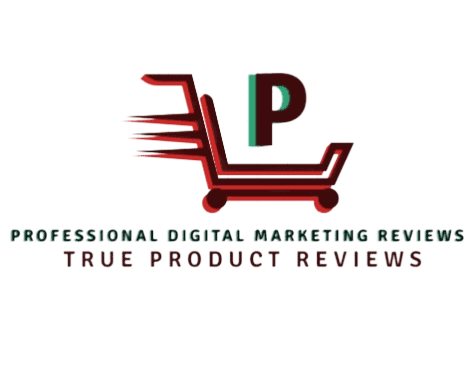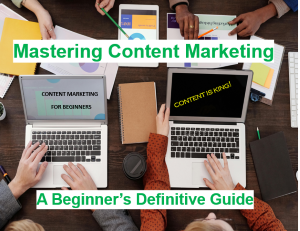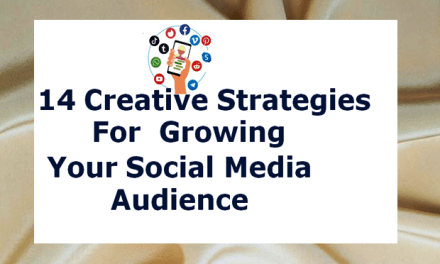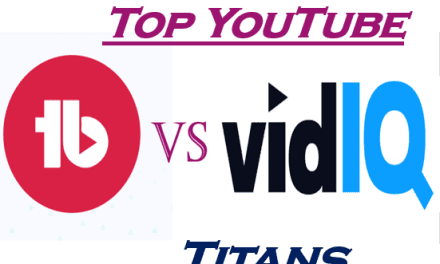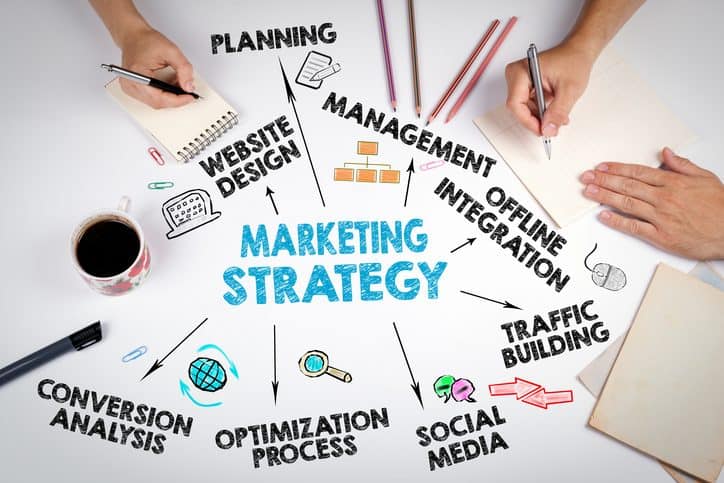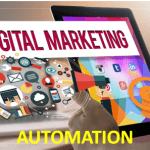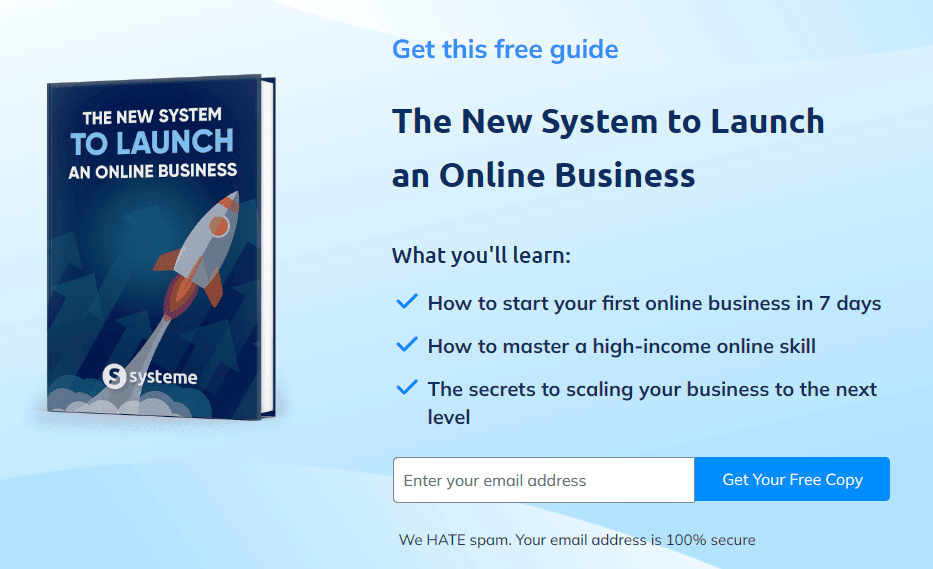Content marketing is one of the finest ways for businesses to engage with their customers, establish their brand, and increase conversions. A beginner in today’s content marketing business model will need a helping hand to understand, create, and succeed in it. The mastery of key elements for faster growth is always a critical item.
Today’s information super highway boasts modern gadgets like smartphones, supercomputers, fast internet, and affordable laptops. Getting information nowadays to help start a business is just a matter of seconds. Content marketing guides such as this one have become handy for beginners aiming to succeed in the strategy of content marketing. Below, you’ll find the best tips to help you succeed in your content marketing journey.
Introduction
In today’s digital era, content is regarded as “the king” of successful digital marketing. Content marketing has emerged as a powerful strategy for businesses to connect with their customers. It helps build brand authority and promote conversions. Marketing for beginners, whether digital or otherwise, needs an innovative strategy to make it successful. It will need content and ways to advertise it.
Content appears in many forms and serves diverse purposes in the marketing field. From videos and blog posts to social media and podcasts, they are essential elements in marketing. Let’s dive into this comprehensive guide and explore the fundamentals of content marketing. This includes its definition, basics, concept, main purpose, types, key strategies, and elements.
What is content marketing?
Content marketing is the lifeblood of all businesses, big or small. So, what is it? It is essentially a concept, a strategic approach to creating and distributing relevant, valuable, and consistent content. This will eventually attract and retain a clearly defined audience. This is when you add value to their lives. They will trust you and gain authority through your content.
Content marketing is a type of digital marketing strategy for marketers like you who utilize content to educate the community. This is while you market products and services. The ultimate goal is to drive profitable customer action, whether by increasing sales, generating leads for you, or fostering brand loyalty.
Main Purpose of Content Marketing
The primary purpose of content marketing is to deliver customer value—entice new customers and keep existing ones—but how?
Attraction: To succeed in it, you’ll need to draw in potential customers by providing valuable and relevant content that addresses their needs and interests.
Engagement: You’ll have to capture your customer’s attention and promote meaningful interactions through compelling storytelling and useful information.
Conversion: Guide your prospects through the sales funnel by establishing credibility, building trust, and encouraging them to take anticipated actions.
Retainment: Try and maintain continuing relationships with your customers by nurturing loyalty, delivering consistent value, and encouraging repeat business.
Top 7 Elements and concepts of Content Marketing
Content marketing is very profitable when done right. Essentially, content marketing revolves around delivering valuable and relevant content to engage and attract a target audience. Though it has undergone a tough revolution, there are some common elements that remain true and super effective. These can be re-defined and used in a modern digital marketing strategy, and include:
1. Objectives
Every other business will basically need working goals. What do you aim to achieve in your endeavors? Remember, in today’s digital age, there are millions of contents being created every day, just like what you want to do. Competition is stiff, so you’ll need to think “beyond the box” for your business to flourish and thrive. You’ll need to outline clear, specific objectives and key performance indicators (KPIs) that you’ll use to evaluate the success of your content marketing efforts.
2. Strategy
Let’s assume you are into a business venture and not just an entertainment scheme. Then you’ll need to strive to develop a strategic plan that aligns with your business objectives. Do in-depth market research, understand and identify your target audience. Of importance is recognizing their pain points or concerns and trying to solve them.
Lastly, scout where they normally search for the type of content you create. This is where you should target your marketing campaigns.
3. Content creation
Content is anything capable of adding value to a reader’s life. You don’t just create content. Develop valuable, engaging, and relevant content that educates, entertains, or solves problems for your audience. This will position your brand as a trusted resource center. Use in-depth keyword research tools like Google Keyword Planner, SemRush, Ahrefs, or H-Supertools to identify appropriate keywords to use in your content. This will help your outfit rank highly in search engine results pages (SERPs).
go. People only care about their problems. They don’t care about who you are or what you are selling, so be careful when developing relevant content, engage them positively. Lead them “where they want to go”. Publish regularly to build strong relationships with your readers.
4. Distribution
“Sharing is caring”. You should effectively distribute your content to the right readers. Add social sharing buttons in strategic places on your content. Make a point of sharing across multiple channels and platforms to reach and engage with a wider audience. Why? Because there are more than 2.5 millions blog posts being created and distributed every single day, so you must craft unique strategies and marketing tips to be visible.
Use channels such as social media, online directories, ad platforms, email, influencers, and many others. Spread your content widely and help your clients or fans solve their needs. You’ll be rewarded generously when you eventually introduce your business to them.
Another creative way is to identify popular and high-ranking third-party websites in your niche and do content syndication. Here, you request to re-publish your content in their blogs. This may earn you some extra exposure.
5. Content promotion
Promoting your content is critical to the success of your content marketing strategy. Strategically promote content through use of a mix of organic and paid promotion campaigns. This will maximize the influence and visibility of your content across various networks.
6. Consistency
At all times publish content regularly and consistently to keep your audience busy and build brand awareness. Plan to do it daily, weekly, or fortnightly, whichever suits you best, but be consistent. Let your audience forecast your next material.
7. Measure and Analyze Performance
Make a point of tracking relevant metrics to evaluate the effectiveness of your content marketing strategy and identify areas needing improvement
What is content marketing strategy?
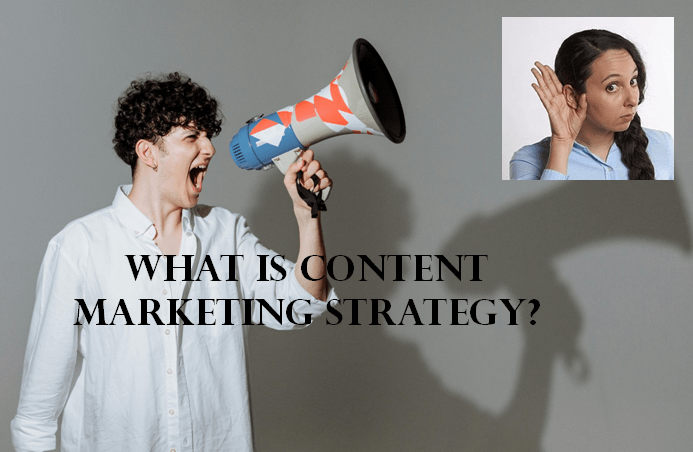
Content marketing is a long-term business advertising strategy. You don’t just create content and stop there. You should follow your content marketing goals to the letter. Promotion is one of the most important aspects of success in your strategic content marketing. Now that you know, there are crucial steps you need to master when developing an advertising strategy. Here is a summary of simple but crucial elements you can adopt in your content marketing plan:
Recommended steps to develop a content marketing strategy for beginners
Identify Your Target Buyer
Make efforts to identify your target audience and engage them. Understand their characteristics well. Make sure you identify their demographics, engagement behaviors, preferences, pain points, and needs.
Set Clear Goals
You know exactly what you need to do. Your strategy will largely depend on your goals. Establish specific, measurable objectives for your content marketing efforts, such as increasing brand awareness or driving sales.
Create High-Quality Content
Quality content is everything. You need to develop valuable, engaging, relevant, and well-researched content that addresses your audience’s needs and provides actionable insights. Use a reputable content marketing platform like QuilBot, Grammarly, WordPress, or Systeme.io.
Develop a Content Calendar
Plan and organize your content creation and distribution schedule to ensure consistency and alignment with your objectives. The best is to use a content marketing strategy template. You can get it from most online content management tools.
Optimize for SEO
Search engine optimization (SEO) is very important for online visibility. Spy on your competitors and make a note of what they are doing. Make similar content to theirs. Incorporate relevant keywords, meta tags, and other SEO best practices to improve your content’s visibility and search engine rankings.
Personalize Content
Readers have different tastes. Identify and group them. Tailor your content to those groupings based on their preferences, behaviors, and past interactions. Make every moment count by personalizing their motives.
Optimize Content for Conversions
You are on business, not a leisure cruise. Include clear calls-to-action (CTAs) and lead magnets within your content. Be it downloading an eBook, visiting a webpage, or commenting on an input, anything of the sort. This will encourage readers to take the next step in the buyer’s journey, where you are directing them.
Repurpose Content
The next important step is to extend the lifespan of your content by repurposing it in different formats. Turn your blog posts into videos or infographics, and you will see a boost in engagements.
Create a Delivery Plan
How and where do you want to distribute your content? You need a content delivery plan. Share your content across multiple related platforms and channels. Use social media platforms, email campaigns, and industry forums to reach a wider audience.
Encourage User Engagement
Be wise and prompt readers to interact with your content through shares, likes, comments, and reviews to increase visibility and credibility. So developing high-quality and engaging content is crucial.
Create Evergreen Content
Your audience needs new content often. Develop timeless, evergreen content that remains relevant and valuable to them over time. Content they will be happy sharing with colleagues or friends.
Offer Incentives
Be creative and offer gated or exclusive content to incentivize email sign-ups, memberships, or subscriptions. You’ll be surprised to discover that “bribes” can be an effective method to initiate communication.
Engage in Guest Blogging
Backlinks are crucial in elevating websites and blogs. Publish guest posts on reputable websites or blogs in your industry to reach new audiences and build backlinks.
Leverage User-Generated Content
Motivate clients to generate and share content related to your products, brand, or services to build social proof and authenticity.
Invest in Visual Contents
Visual contents attract the eyes of the beholder! Incorporating appealing elements such as images, videos, and infographics is rewarding. They enhance readability and shareability in the content marketing world. Some detailed video courses can help with your content creation.
Build a Community
It’s important to foster a sense of community and belonging among your audience. Do this by encouraging discussions, hosting events, or creating dedicated forums or groups.
Team Up With Influencers
Try to identify and team up with influencers or industry experts to strengthen your content’s reach and credibility among your followers.
Monitor Performance Metrics
You should strive to measure the effectiveness of your content marketing efforts by tracking key performance indicators (KPIs). These are website/blog traffic, engagement rates, social media shares, links, and conversion rates.
Continuously Iterate and Improve
Be clever and use the strengths, weaknesses, opportunities, and threats (SWOT) method to regularly review and analyze your content performance data. This will help you identify areas that need improvement and adjust your strategy accordingly.
Stay Up-to-Date with Industry Trends
Lastly, you should keep abreast of current events, industry marketing trends, and popular topics. This is the prerequisite for creating timely and relevant content that resonates with your audience.
Top 10 Key Content Marketing Types
There are several methods of information distribution. You can deliver content in several effective ways. If it’s possible, and you can afford it, utilize at least most of them to realize maximum exposure. All of them, when used wisely, will complement each other seamlessly to your advantage.
1. Blog Posts:
Blog posts are written articles providing valuable information, insights, and solutions to solve readers’ problems. These are the most important contents but long-term online business strategies in the content marketing world.
2. Email Newsletters:
These are regular bulletins loaded with updates normally sent to subscribers containing valuable content, offers, or announcements.
3. Social Media Posts:
Short content shared on platforms like Twitter, Instagram, Facebook, and LinkedIn. They are very effective in information dissemination.
4. Videos:
Engaging and captivating visual content that entertains, educates, or inspires audiences.
5. Infographics:
Visual illustrations of data or information that are easy to digest and share.
6. Webinars:
Recorded or live online web seminars that provide valuable information or training.
7. Ebooks:
Created in-depth online guides and resources. They offer comprehensive data on specific subjects.
8. Podcasts:
Audio recordings that cover various subjects and can be consumed on-the-go.
9. Case Studies:
Real-life examples that showcase how a product or service has benefited clientele.
10. Whitepapers:
Research information or authoritative documents that explore into industry trends or insights.
TIP: We recommend subscribing to a free all-in-one marketing platform like Systeme.io to create awesome contents for your business.
Content Marketing Benefits
Content marketing offers numerous benefits for businesses of all sizes. If you want to gain maximum benefits, then you should strive to create and distribute valuable, relevant, content consistently. This will eventually help your business attract and retain your followers. Below are a few benefits you can garner with this type of marketing strategy:
- Enhanced customer engagement and loyalty: If you develop engaging and valuable content, you’ll build trust with customers, foster stronger relationships and promote repeat business.
- Increased brand visibility and awareness: This content marketing strategy will make your business effectively establish its brand presence and increase awareness among its target audience.
- Increased website traffic and lead generation: You’ll definitely get enhanced traffic through informative blog posts, videos, or downloadable resources.This will attract potential customers to your website and increase opportunities for lead generation.
- Improved search engine rankings: Creating optimized, high-quality content will helps your business rank higher in search engine results thereby driving an avalanche of organic traffic to your website.
- Customer retention and loyalty building: Regularly delivering valuable content keeps existing customers engaged with your brand while solidifying their loyalty over time.
- Thought leadership establishment: Consistently producing relevant and insightful content will position your business as an industry expert, elevating your reputation in the market.
- Cost-effective marketing strategy: Compared to traditional advertising methods, content marketing is often more affordable and offers a greater return on investment (ROI).
- Better conversion rates: To achieve this, you be obliged to produce valuable information through content marketing efforts. Your business can then increase the likelihood of converting website visitors into paying customers.
- Improved social media presence and engagement: Share informative and entertaining content on social media platforms. This willhelp generate interest in your business’s products or services while encouraging interaction with your followers.
- Long-term sustainability and growth: If you need a foundation for long-term success and establish an online presence, then you should embrace content marketing. This will continue to provide value even after your initial campaigns have ended.
Content marketing tools
Modern businesses need tools to help with content creation, management and distribution. Let’s explore a few awesome tools you can leverage for business success:
A free, powerful all-in-one online content creation and marketing tool for beginners and professional business creators
2. WordPress
A popular content management system (CMS) for creating and managing websites with blogging capabilities.
3. Google Analytics
Provides in-depth website traffic analysis to measure the effectiveness of content marketing efforts.
An AI-powered writing assistant that helps improve the quality of written content by identifying grammar, spelling, punctuation errors, and more.
An all-in-one digital marketing software that offers SEO, PPC, social media, content marketing tools, and more.
A graphic design platform with easy-to-use templates for creating engaging visuals such as infographics and social media graphics.
7. BuzzSumo
Helps identify trending topics and influential industry leaders to guide content creation strategy.
8. HubSpot
A comprehensive inbound marketing platform that includes content creation, management, and distribution features.
9. Hootsuite
A social media management tool that allows scheduling and monitoring of content across multiple platforms.
Examples of Content Marketing Campaigns
Pricelessportal
– Marketer’s hotspot for small business owners: Created a go-to store with a plethora of done-for-you digital contents that can be used as the ultimate tool to build and launch your own digital shop. They vigorously market their products with a smile!
Systeme.io
– Free forever campaign! Popularizing the world’s easiest, and pocket-friendly all-in-one content marketing platform for beginners.
Coca-Cola’s Campaign
– Share a Coke Campaign: Tailored Coke bottles featuring people’s names encouraged customers to buy bottles not only for drinking but also as a novelty item worth sharing on social media and beyond.
Red Bull’s
– The Red Bulletin: This magazine-style publication covers extreme sports, music, culture from around the world which aligns with their brand image as an energy drink for high-energy activities
Sephora’s Beauty Insider
– Sephora built an online community where customers could share beauty tips & knowledge fostering consumer loyalty through shared interests & valuable information.
American Express’OPEN Forum
– They created a business-themed online community offering advice on various aspects of running a business. Very useful information for small business owners while associating American Express with entrepreneurship ventures.
Oreo’s Daily Twist
– Oreo campaign created 100 pieces of timely visual content in honor of its 100th birthday.It demonstrated its flexibility in fitting into current events or trending topics while delivering memorable visual messages with a twist.
Conclusion
Content marketing offers a lot to businesses and remains one of the most effective strategies to connect with customers. It will help you with tactics to build brand authority and drive substantial conversions. Getting to know the basics of content marketing is the first step towards business success. You’ll be able to identify the right strategies and how to consistently delivering valuable content.
This way you’ll be able to effectively engage your audience, drive meaningful interactions, and achieve your marketing goals. So, use our free recommended tool wisely, experiment with different tactics, and embark on your journey to mastering the art of content marketing.
Our recommendation- Free Systeme.io content management tool
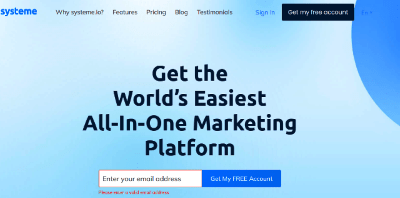
Related articles you may be interested in:
Digital Marketing Strategies: The Complete Manual for beginners
Top 10 Dynamic Trends: Future of Online marketing Business
Marketing Strategies: Unveiling New Frontiers in the Digital Mirage
